Better than ever? We give Yamaha’s latest YZ250F a ride.
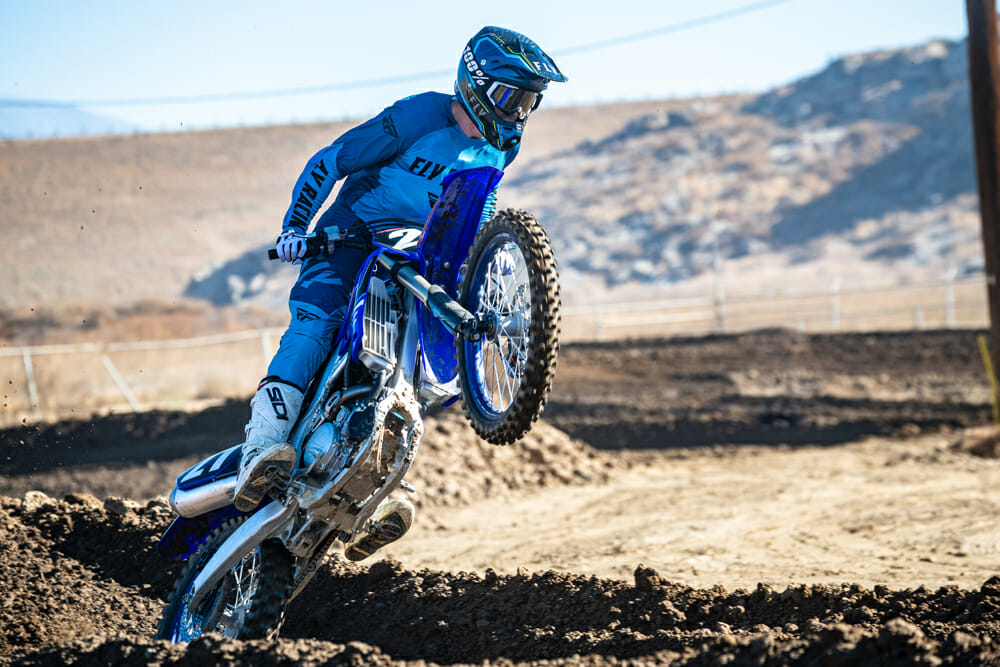
By Ryan Nitzen
Photography by Kit Palmer
They say it’s lonely at the top. That the only place you can go from there is down. Well tell that to the folks at Yamaha because the YZ250F has been one of, if not the best bike, in the 250 class ever since the blue crew debuted their reverse engine design back in 2014. The boys in blue won the Cycle News 2020 250 MX shootout and has been going strong ever since. Yamaha, a company never known to rest on its laurels, is back with an updated YZ250F for the 2021 model year. A bike that has already solidified itself at the top step of the podium sees a number of revisions that aim to improve power and precision within the engine and chassis. After seeing these bikes tear through the first turn at an outdoor national in perfect synchronization, we were eager to throw a leg over the latest blue beast that took on a fair amount of changes.
Last year’s bike was practically unchanged when it won our 2020 250 MX shootout. Besides bold new graphics and a new rubber insert on the air filter, the bike was virtually identical to its 2019 predecessor. But you know the saying, “if it ain’t broke don’t fix it.” For 2021, however, Yamaha ignored that old saying and went to work on the ’21. The ’21 YZ250F retains a familiar look but boasts a list of updates including a new cylinder head, a wider intake port, revised frame thicknesses with new flex characteristics, new front brake caliper, updated suspension settings and, of course, new graphics.
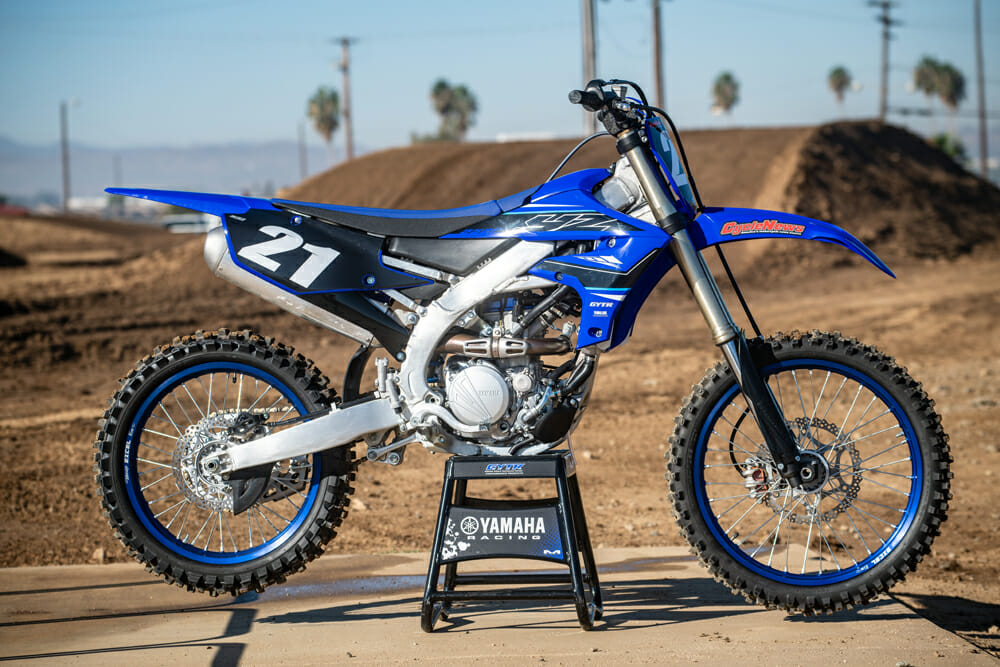
Yamaha also claims to have refined the crankcase, cam chain and tensioner, water pump and clutch basket for increased durability over previous generations. Another new option for ’21 is the Monster Energy Yamaha Racing Edition, complete with black plastics and race team graphics. The standard YZ250F flaunts an all-new set of blue plastics and graphics to match. For the new year the YZ, once again, comes equipped with compatibility for Yamaha’s proprietary Power Tuner App and features a handlebar-mounted map switch.
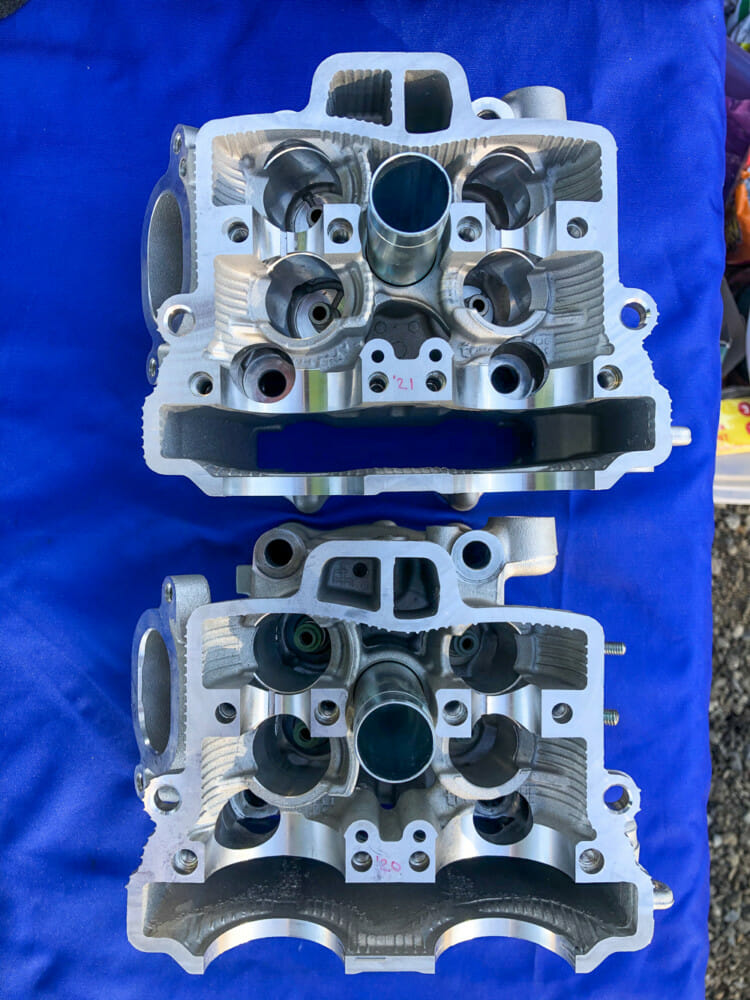
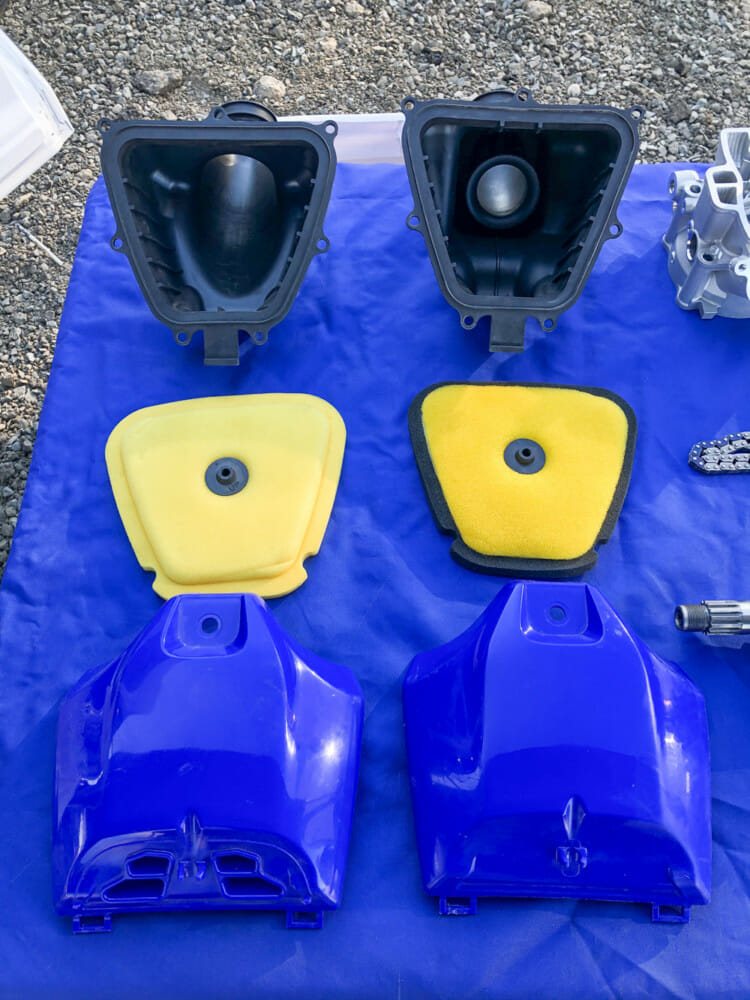
Our test day with the ’21 YZ250F just so happened to be at State Fair MX (previously Starwest) in Perris, California, on the same day Malcom Stewart and Jeremy Martin took their first laps on their new YZ-Fs. Coincidence? We think not. It was a treat to see the 250F in stock trim next to its full-blown racing relative. The blue crew also brought out a 2020 model to compare updates and test back to back. The State Fair track is known for having a tight and twisty layout with plenty of jumps; good for testing low end torque, suspension, brakes and cornering ability.
After setting sag and firing up the small-bore Yamaha, we took to the track. I say this every time but I’ll say it again; if you don’t normally ride a YZ-F you’ll notice the sound of the engine right away. Since the airbox sits in the rider’s lap, you can hear the bike pulling air in a much more noticeable manner than some of the other Japanese competitors. It’s by no means a deal breaker, but you might want to pick up some ear plugs on your way home from the dealership.
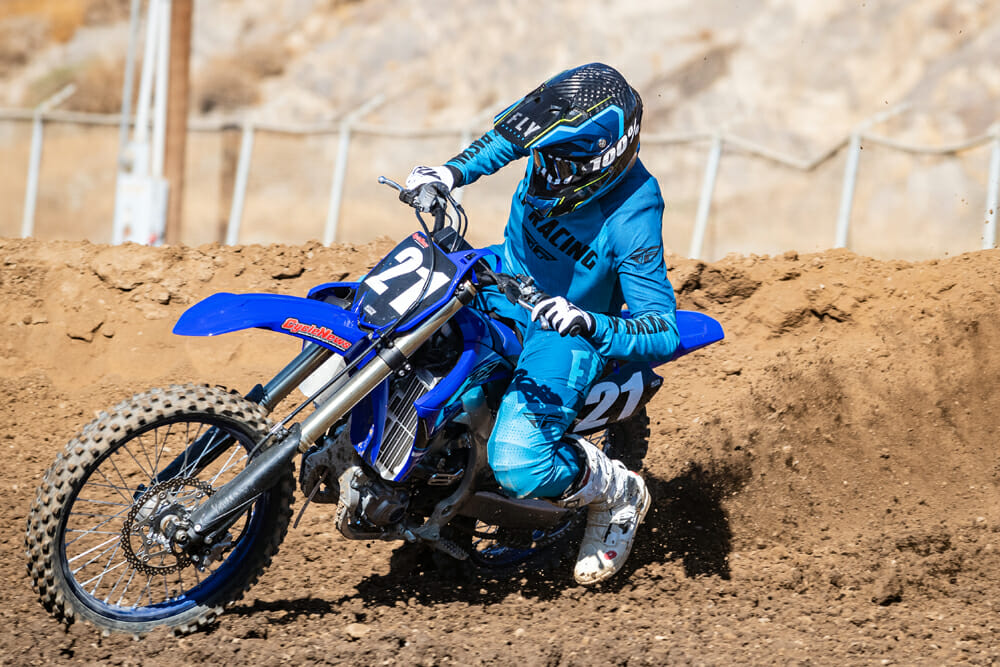
First laps. Someone call the dog pound because this thing barks. The YZ250F’s engine is just as strong as ever, with equal parts of lug-ability paired with a ferocious top end. The layout at State Fair caters to second and third gear on a 250F, both of which possessed more than enough juice for jumps right out of the inside lines. I switched to the “light on” map mid-moto (you can switch maps on the fly with the YZ) for a little more oomph and got just what I asked for. The broader hit of the “light on” map gave the bike that much-more-everywhere feeling. With the added over-rev up top, I was able to stay in one gear just a little bit longer on the straightaways and jump faces, saving that little bit of extra energy anywhere I could.
What I really like about this powerplant is its broad range of usability. It feels suitable for a novice rider and is obviously a good platform for 2020 250MX Champion Dylan Ferrandis.
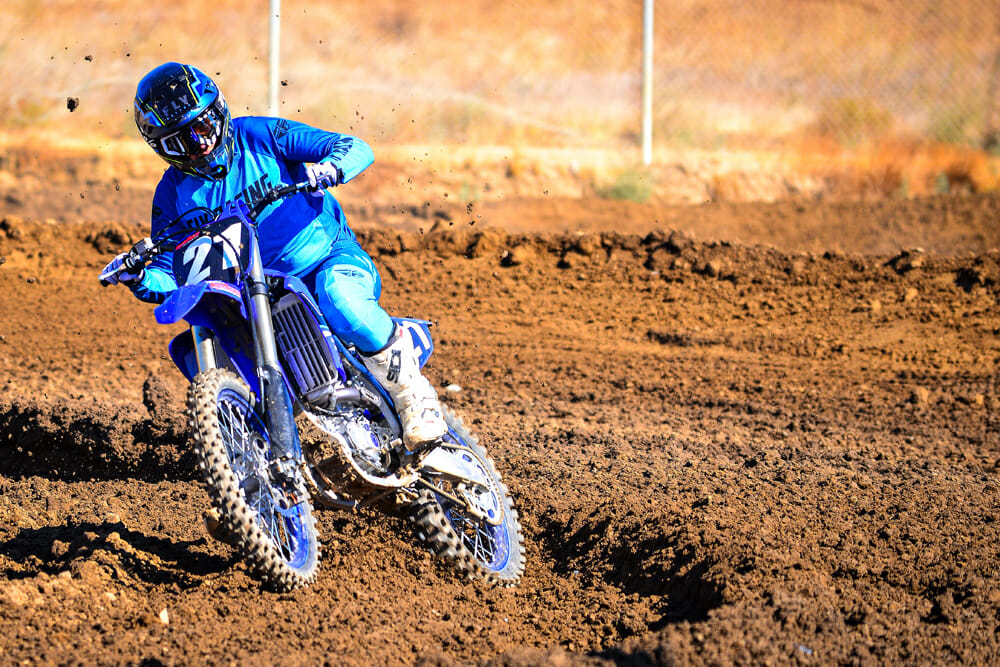
The YZ250F really stands apart from the rest with its Power Tuner App. While its competitors have three standard maps at most, or dare we say, an outdated coupler system, the Yamaha literally has endless tunability. New to the big bike? No problem. Just turn down the hit of the ignition and you’re good to go. Want more on high-speed tracks? Done. The Yamaha crew members reminded us that they have a plethora of pre-made maps that are ready to download straight from their website. From Yamaha, map files will load directly to the Power Tuner app when downloaded from your phone. From a PC, download the map file and email it to your device for upload to your Power Tuner app. If you’re not sure about how to use the app, go to the Yamaha Power Tuner webpage. and it explains everything you need to know. Plus, Yamaha cannot emphasize enough that you cannot damage your bike’s engine using the app. It’s been programmed not to let that happened, so, go ahead and tune away.
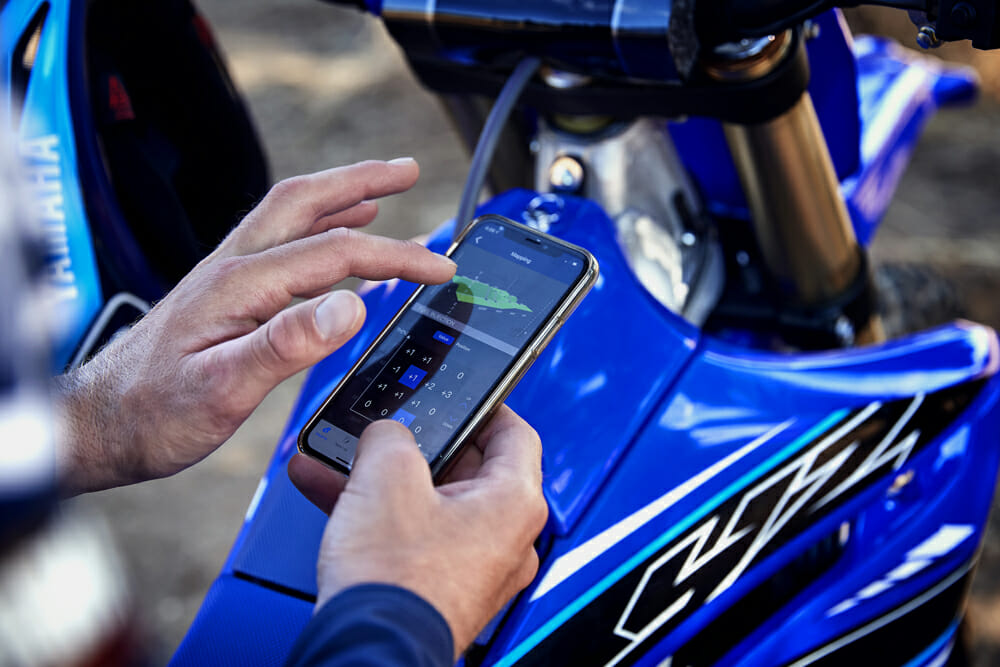
On to the suspension. The blue bikes have set the standard for suspension in recent years and, once again, the YZ’s KYB components worked as well as we could have hoped for right out of the box. We set the sag at 104mm and felt confident enough to click off laps after just a few corners. The Speed Sensitive System (SSS) forks offered that sought-after cloud-like feel while absorbing chatter bumps with a progressive dampening as the bike dove deeper into the stroke.
I did struggle a bit with the front end through some of the faster banked corners, the forks seemed to sit high in the stroke for the majority of the turn. This gave the front end a vague, chopper-ish feeling that would bite only when the bars were turned and the front wheel was on the edge of knifing. The Yami boys took to the clickers, taking two out on compression and one out on rebound. These adjustments allowed the fork to settle into the corner better and gave me much more confidence in the turning with the front end. The overall chassis balance and clicker changes made holding the faster outsides or slicing through tight 180s nearly effortless.
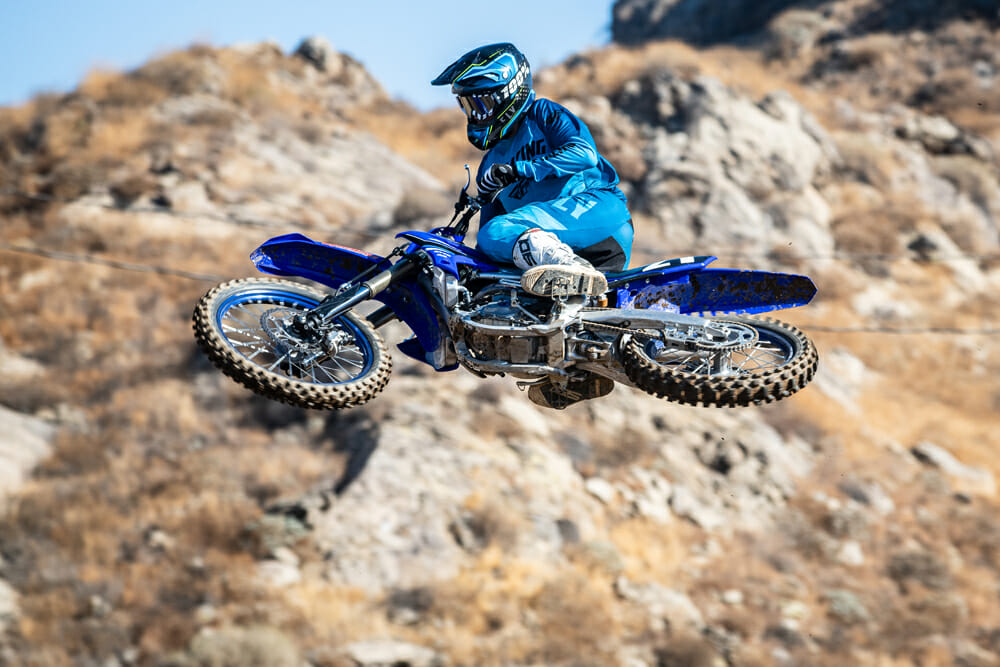
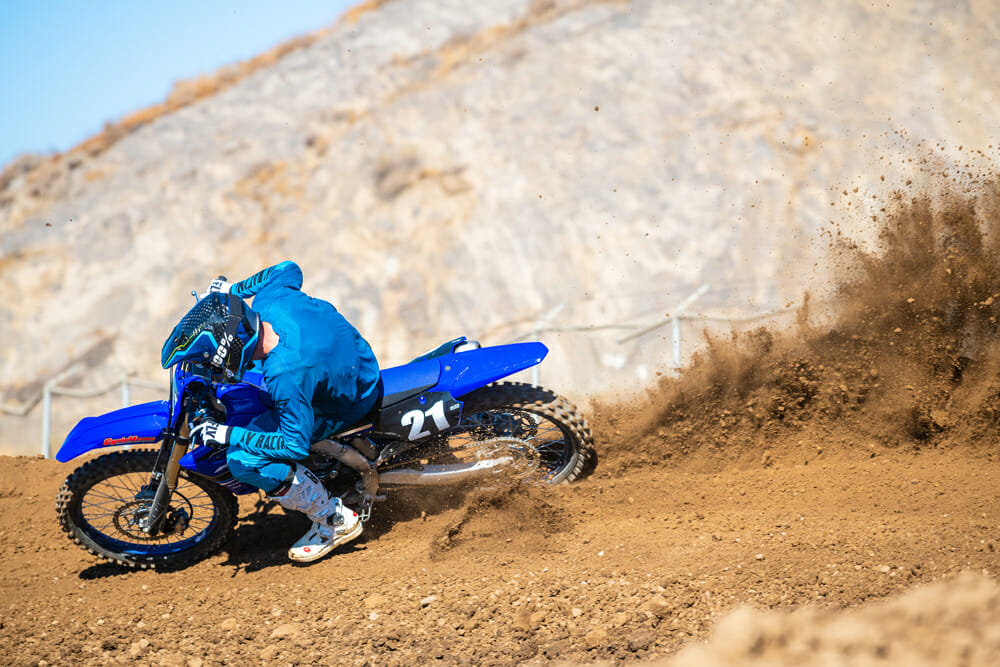
The rest of the bike could be described in one word: smooth. Clutch pull—smooth. Transmission—smooth. Braking—smooth. It’s been a year since I rode a Yamaha YZ250F, and I was once again impressed with the machine’s overall user friendliness. Shifting the bike requires minimal effort, the same with using the clutch. Grab another gear or slip the clutch without fear of arm pump or exhaustion.
I always try to test bikes from a consumer point of view. I want to see which bike is the easiest to go the fastest on. In my mind, the bike that I can turn the fastest laps on with the least amount of effort would be the best bike for me. Obviously, this might be different for each rider, but some characteristics (suspension, cockpit, etc.) can be well-liked across the industry. The Yamaha hit all my marks in this category, as I smoothly burned through a 20-minute moto. Riding this bike is fun and easy, something dirt bikes should be!
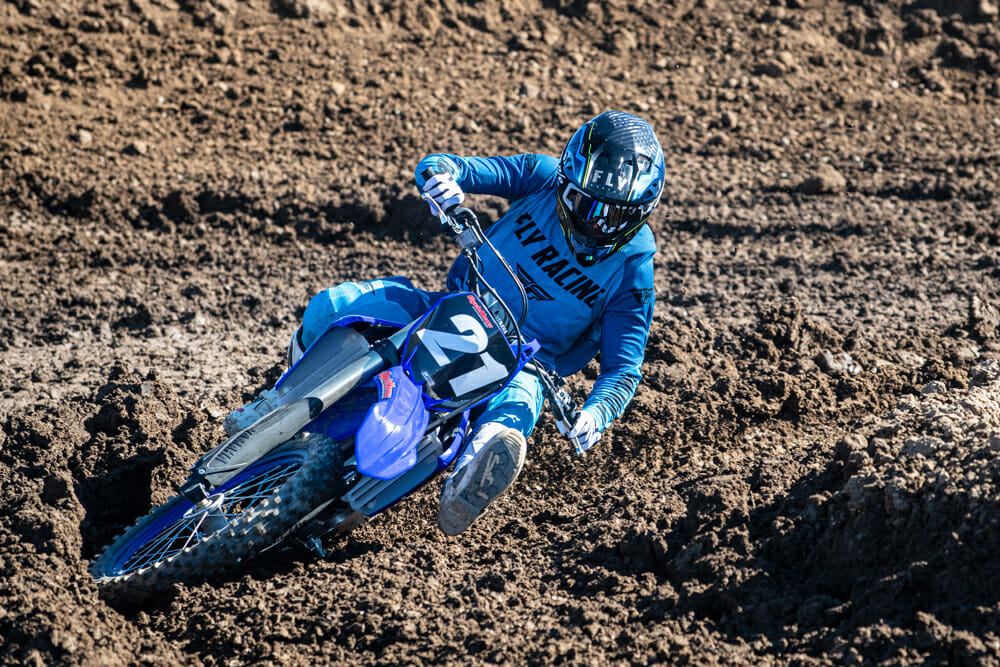
This bike’s mantra is all about getting you to the “#victorYZone” faster than any other bike on the market. After watching Jeremy Martin annihilate the track on his new Yamaha, we feel like the blue crew is pretty spot on. A host of new revisions have been aimed at making a good bike even better. But is that even possible? Why try to change something that’s already a winner, right? Well, riding the ’20 and the ’21 back to back is like comparing your favorite knife in the kitchen to a brand-new one—yours is trusty, reliable and does everything well. But that new knife would cut everything just that much better. Same goes for the YZ-Fs. The ’20 won last year’s shootout, but this year’s bike is fresher, more precise, and simply easier to ride. We’re excited to spend more time on the blue bike and put it through its paces in the 2021 250 MX shootout. CN
2021 Yamaha YZ250F Specifications
| MSRP: | $8299 Blue / $8499 Monster Energy Edition |
| Engine: | 4-stroke, single |
| Displacement: | 249cc |
| Valvetrain: | DOHC, 4 valves |
| Cooling System: | Liquid |
| Bore x Stroke: | 77 x 53.6mm |
| Compression Ratio: | 13.8:1 |
| Fuel Delivery: | Mikuni fuel injection, 44mm |
| Engine Tuning: | 2-position handlebar-mounted map button; fully adj. w/ Power Tuner App |
| Starting System: | Electric |
| Transmission: | Constant mesh 5-speed |
| Clutch: | Wet, cable actuated |
| Frame: | Aluminum |
| Handlebars: | Aluminum, 4-position mounts |
| Front Suspension: | KYB Speed-Sensitive System (SSS), fully adjustable |
| Rear Suspension: | KYB single shock, fully adjustable |
| Front-Wheel Travel: | 12.2 in. |
| Rear-Wheel Travel: | 2.5 in. |
| Front Brake: | Single 270mm disc |
| Rear Brake: | Single 240mm disc |
| Front Tire: | 80/100-21 in. Bridgestone Battlecross X20F |
| Rear Tire: | 100/90-19 in. Bridgestone Battlecross X20R |
| Seat Height: | 38.2 in. |
| Wheelbase: | 58.1 in. |
| Rake: | 26° |
| Trail: | 4.7 in. |
| Ground Clearance: | 13.2 in. |
| Fuel Capacity: | 1.6 gal. |
| Weight (wet, claimed): | 234 lbs. |
| Colors: | Yamaha Racing Blue / Monster Energy Yamaha Racing Edition |
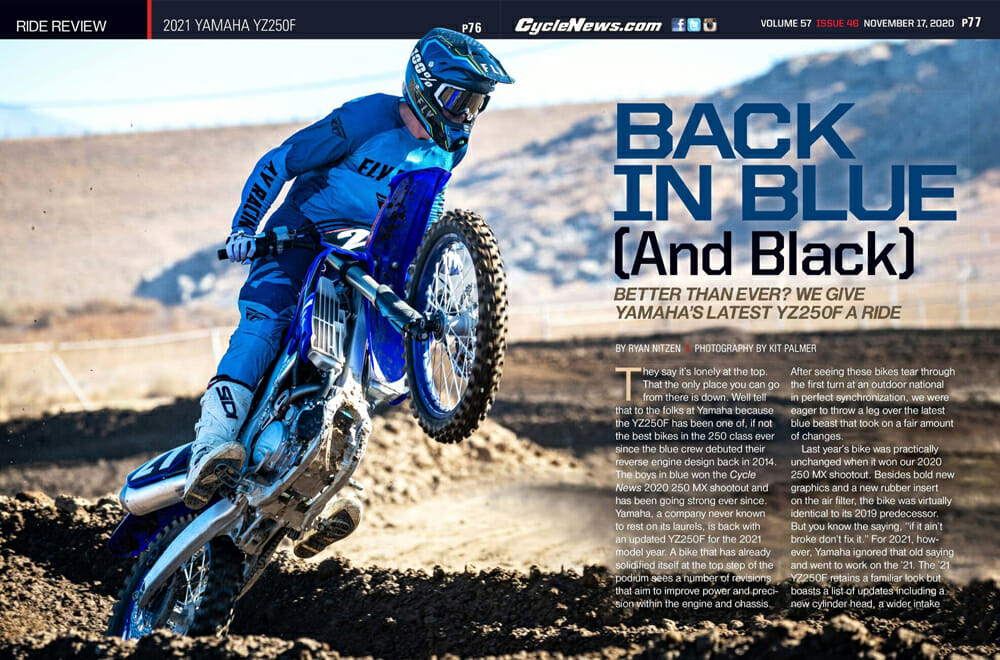
Click here to read the 2021 Yamaha YZ250F Review in the Cycle News Digital Edition Magazine.
Click here for the latest Cycle News Motocross bike reviews and news.
Click here for more Yamaha motorcycle reviews and news.
November 20, 2020 at 05:51AM
https://ift.tt/2UHPiRJ
2021 Yamaha YZ250F Review - Cycle News
https://ift.tt/2ZqQevw
Yamaha
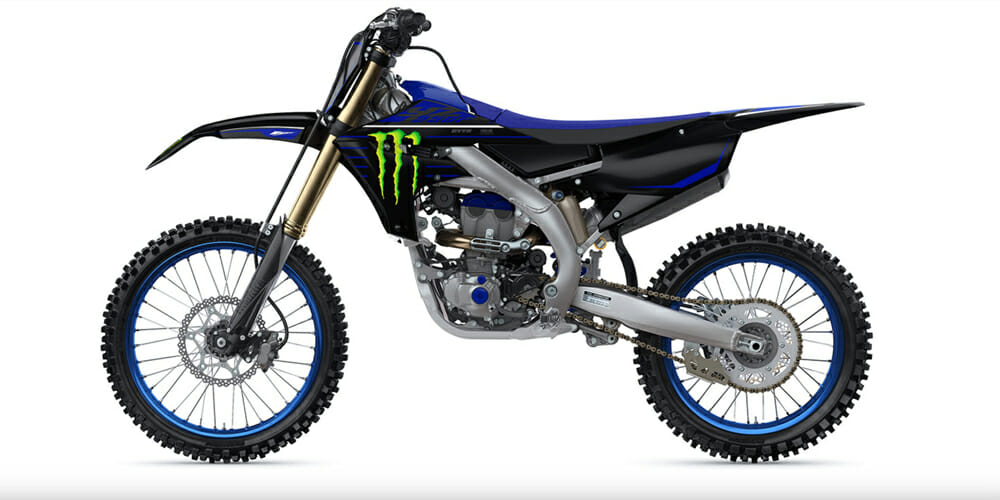

No comments:
Post a Comment